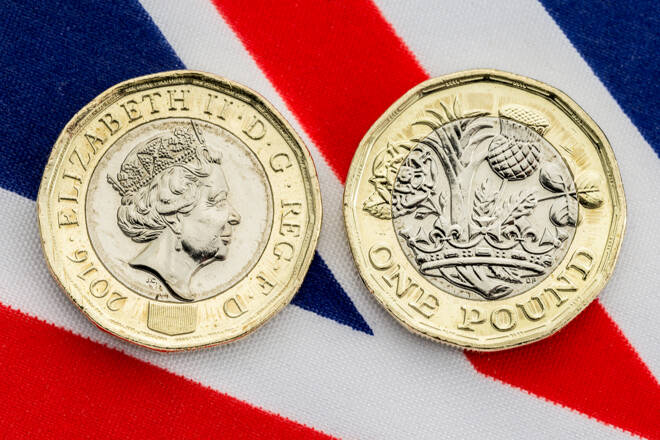Advertisement
Advertisement
GBP to USD Forecast: British Pound Wavers Amid Middle East Tensions and IMF Report
By:
Cable's Conundrum: IMF reports, Middle East conflicts, and contrasting economic indicators dictate the Pound's presence on the global stage.
Highlights
- GBP/USD saw a modest gain on Monday, rounding off at $1.22373 after a 0.37% rise on Friday.
- Gloomy BRC Retail Sales Monitor cast shadows over the UK economic outlook with a mere 2.8% YoY rise.
- IMF’s impending Global Economic Outlook set to shape GBP/USD trends amid global uncertainties.
Overview of the Monday Session
On Monday, the GBP/USD gained 0.01%. Following a 0.37% rise on Friday, the GBP/USD pair ended the day at $1.22373. The GBP to USD pair declined to a low of $1.21628 before reaching a high of $1.22439.
Retail Sales Report Sent Gloomy Signals
The BRC Retail Sales Monitor increased by 2.8% year-over-year in September vs. +4.3% in July. Economists forecast a 3.1% rise. A weaker consumption outlook paints a grim picture of the UK economy. UK consumption accounts for more than 60% of the UK economy.
Uncertainty about the conflict in the Middle East contributed to an early pullback in the GBP/USD pair.
Later today, the IMF Global Economic Outlook Report will garner investor interest. Projections of a deteriorating global macroeconomic environment and expectations of a prolonged UK recession would pressure the GBP/USD pair.
However, news updates from the Middle East also warrant consideration. Reports of other nations in the region planning to join the conflict would fuel a flight to the safety of the US dollar.
On the BoE calendar, the Financial FPC meeting minutes are out. However, the minutes will likely play second fiddle to the IMF Global Economic Outlook Report.
FOMC Member Speeches Remain in Focus
Later today, FOMC voting members Christopher Waller and Neel Kashkari are on the economic calendar to speak. Further support for ending the Fed monetary policy tightening cycle would ease demand for the US dollar.
Short-Term Forecast
The GBP/USD trends hinge on economic forecasts and news updates from the Middle East. A deteriorating UK macroeconomic environment and rising geopolitical tensions would weigh on buyer appetite for the Pound.
GBP to USD Price Action
Daily Chart
The GBP/USD pair sat below the 50-day and 200-day EMAs, affirming bearish price signals. Significantly, the 50-day EMA fell back from the 200-day EMA after the bearish cross, another bearish signal.
The IMF Global Economic Outlook Report, central bank commentary, and news updates from the Middle East will influence the GBP/USD pair.
A return to $1.2250 would support a move toward the 50-day and 200-day EMA and the $1.24410 resistance level. A de-escalation in the Middle East and dovish Fed commentary would provide GBP/USD support.
A drop below the $1.22150 support level would give the bears a run at $1.20.
The 14-period daily RSI reading of 40.85 supports a GBP/USD fall to $1.2150 before entering oversold territory.
4-Hourly Chart
The GBP/USD hovers above the 50-day EMA while remaining below the 200-day EMA, sending bullish near-term but bearish longer-term price signals. A GBP/USD return to $1.2250 would support a move to the 200-day EMA.
However, a fall below the $1.22150 support level would bring the 50-day EMA into play. A fall through the 50-day EMA would give the bears a run at the $1.19055 support level.
With an RSI reading of 56.22 for the 14-period 4-hourly Chart, the GBP/USD could target the 200-day EMA before being considered overbought.
About the Author
Bob Masonauthor
With over 28 years of experience in the financial industry, Bob has worked with various global rating agencies and multinational banks. Currently he is covering currencies, commodities, alternative asset classes and global equities, focusing mostly on European and Asian markets.
Advertisement
